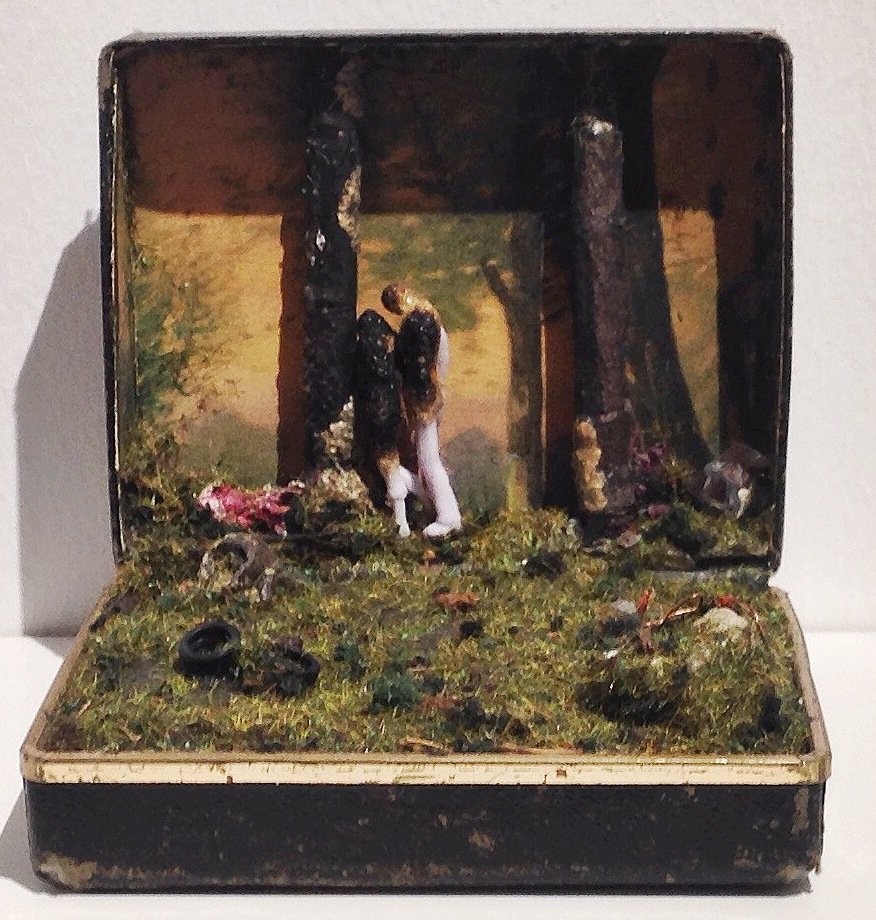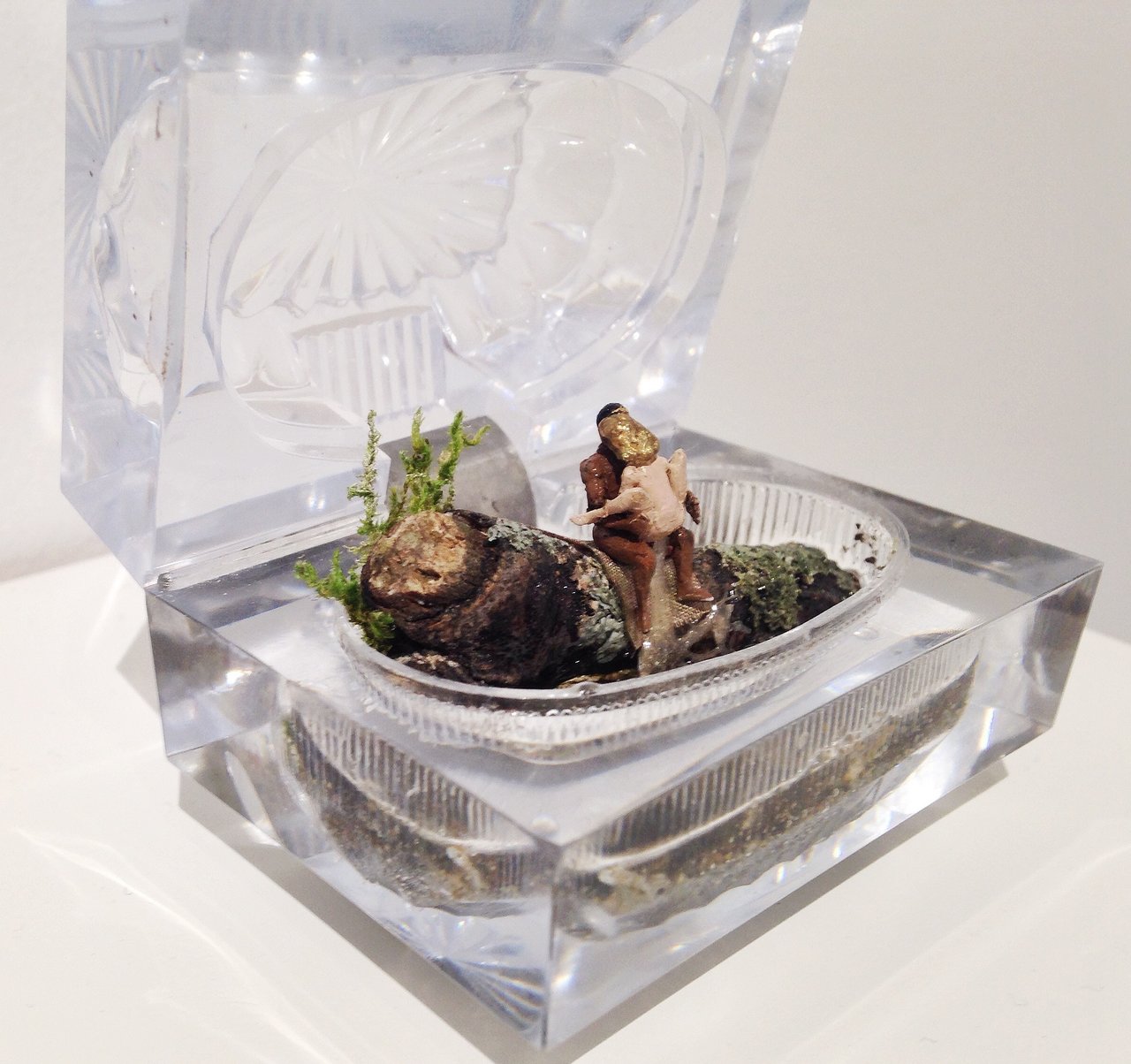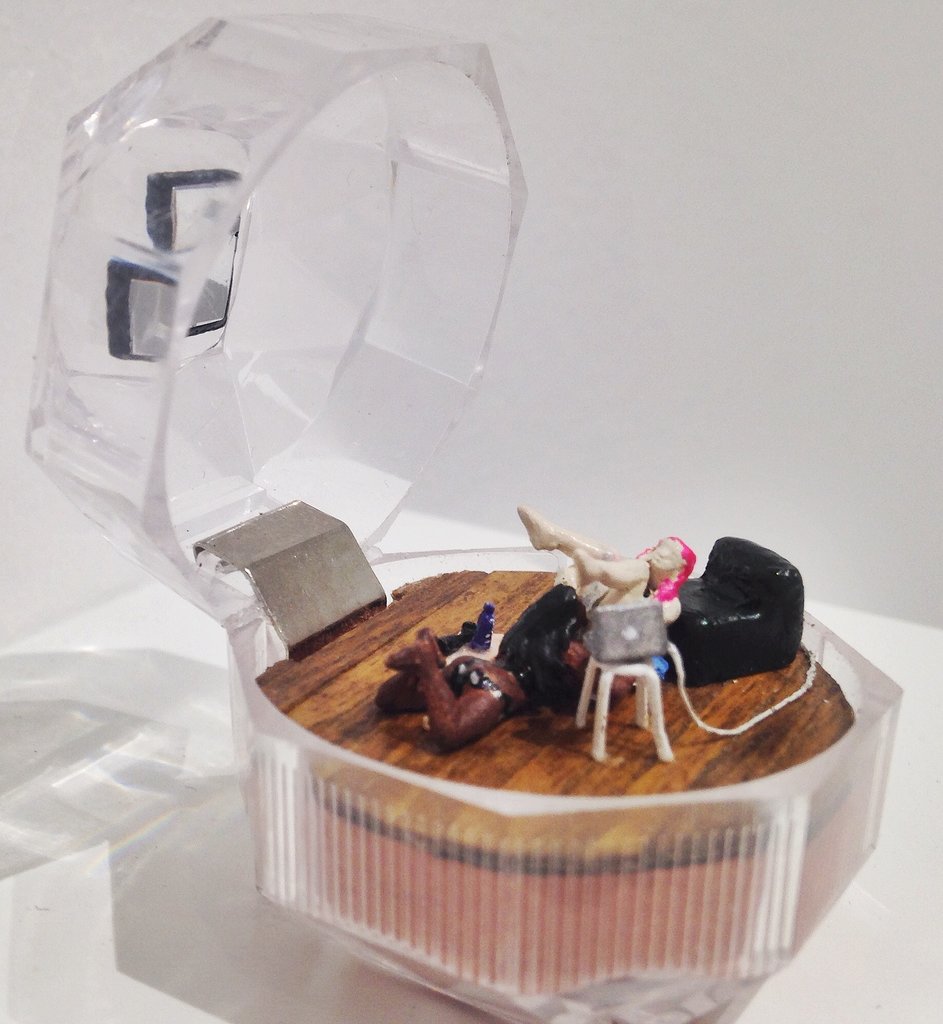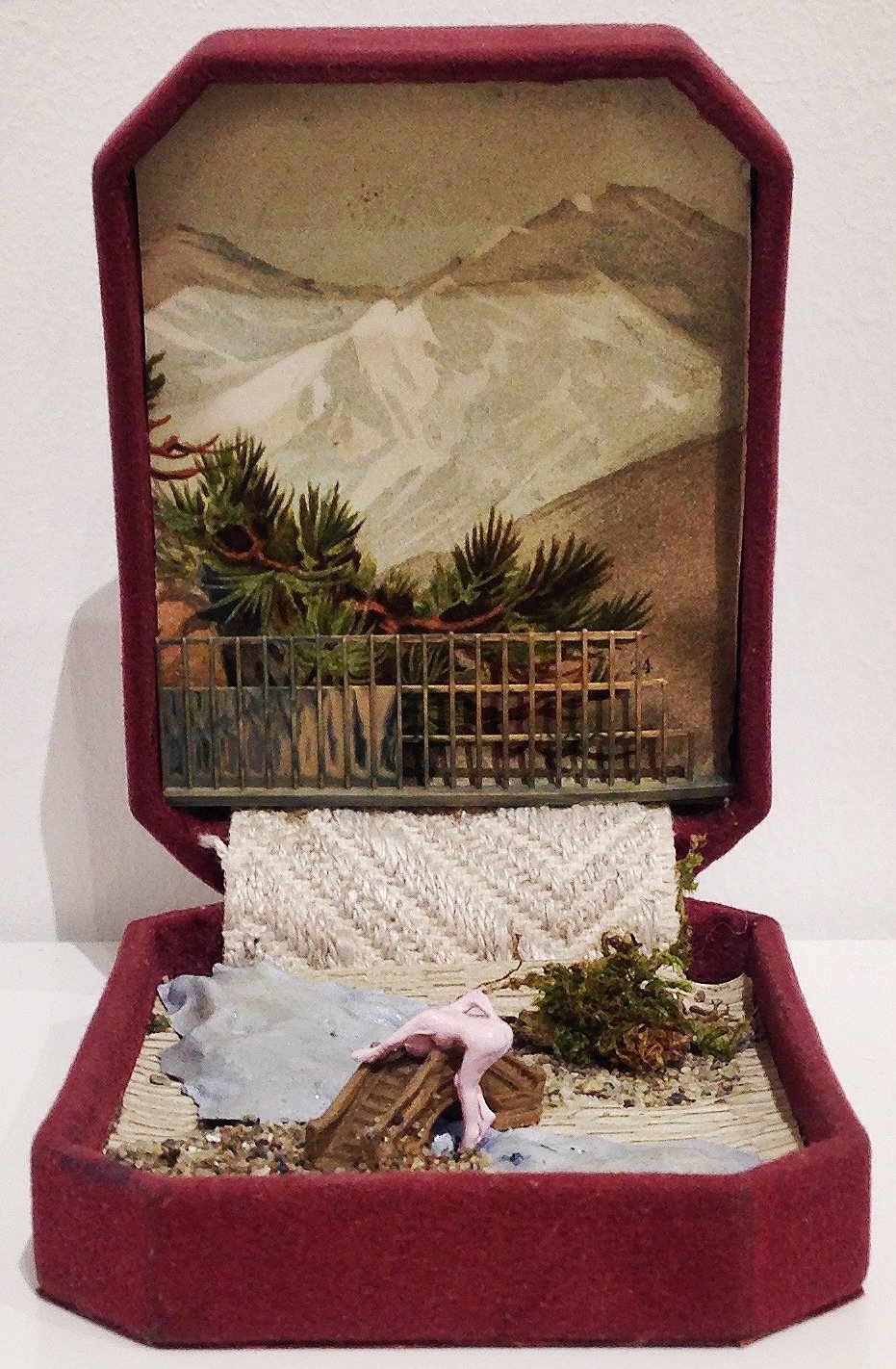Art objects participate in a discourse that has been structured hierarchically around an assumed correlation between size and power or importance, privileging the grandiose work of art, with its connotations of democracy, heroism and spectacle. In opposition, small objects have been associated with intimacy, collecting and personal memory or nostalgia. Contemporary artists who work with miniatures have the opportunity to complicate historically dominant expectations about the spaces minute objects can occupy and the subjects which they can address. In the exhibition The History of Touches, currently on view at Angell Gallery, Canadian-Trinidadian artist Tawlst presents miniature dioramas in reclaimed ring boxes. In direct opposition to monumental art objects, which are considered to be democratic as they are ultimately conducive to mass public viewings, the viewing experience of miniatures demands a degree of intimacy – they are more suited to the private sphere. At Angell, this fact is heightened as the viewer enters the exhibition space by parting a set of curtains which separates Tawlst’s work from the rest of the gallery.
 TALWST, I Know Places We Could Go, 2014. Mixed media in vintage ringbox. 3″ x 3″ x 3″
TALWST, I Know Places We Could Go, 2014. Mixed media in vintage ringbox. 3″ x 3″ x 3″
The division may also be in part due to the fact that these works are sexually explicit in nature, depicting a variety of erotic scenes. Yet while a general sense of the acts committed in each diorama can be gathered, they remain vague – complicating the distinction between public and private, they both reveal and conceal. The artist cites Japanese Shunga art as an inspiration for the central themes of eroticism, considering the ways in which this art opened new possibilities for human contact and intimacy. While conceptually this show may draw on the historical reference of Shunga, the scenes depicted are decidedly contemporary, with the often and repeated inclusion of, for example, laptop computers. As the title may suggest, the exhibition considers the development and changes in a long history of human intimacy and interaction.
 TALWST, Nature Feels (Arancio Beret), 2015. Mixed media in vintage ringbox. 2″ x 2″ x 3″
TALWST, Nature Feels (Arancio Beret), 2015. Mixed media in vintage ringbox. 2″ x 2″ x 3″
 TALWST, She Know, 2015. Mixed media in vintage ringbox. 2″ x 2″ x 2″
TALWST, She Know, 2015. Mixed media in vintage ringbox. 2″ x 2″ x 2″
These pieces belong to a much larger body of Tawlst’s work, the “infinity series”, all connected by the use of the ring box. These reclaimed objects would have originally been used as cases to hold or protect something precious or valuable, and have been reemployed by the artist as a means of exploring a range of subject matter from pop culture and art history to racial marginalization and police brutality (“Minimized Histories” being one example). The crafted figurines inside the ring boxes may also bring to mind a toy – the physical embodiment of fiction, and the perfect device for fantasy and play, allowing for the repeated manipulation of the figures through the testing and investigation of different scenarios.
 TALWST, Self Love II, 2015. Mixed media in vintage ringbox. 2″ x 3″ x 3″
TALWST, Self Love II, 2015. Mixed media in vintage ringbox. 2″ x 3″ x 3″
Understandably, miniatures bring about a change in the relationship between body and object – the works require a distinct change in the bodily conduct and behaviour of the viewer. Diminutive objects require the body to contort as the curious observer changes their posture to get closer to the item, crouching down to or hunching over the objects to gather more detail and to simulate a more private viewing of the object. Tawlst’s work is without a doubt made all the more captivating through its demand for viewer engagement. The particular height of the plinths used to exhibit the work encourages practices of public voyeurism, desire to behold and scrutinize these precious objects. The act of voyeurism is heightened by the inclusion of impossibly small mirrors within a number of the dioramas. Having caught a glimpse of my own face while peering into these tiny boxes, immense in comparison, I was made aware of my assumed role of voyeur in the scene.
Text and photo: Katie Lawson
*Exhibition Information: October 16 – November 14, 2015, Angell Gallery, 1444 Dupont St., Unit 15 (entrance off Campbell Ave). Gallery Hours: Wed – Sat 12 – 5 p.m.
